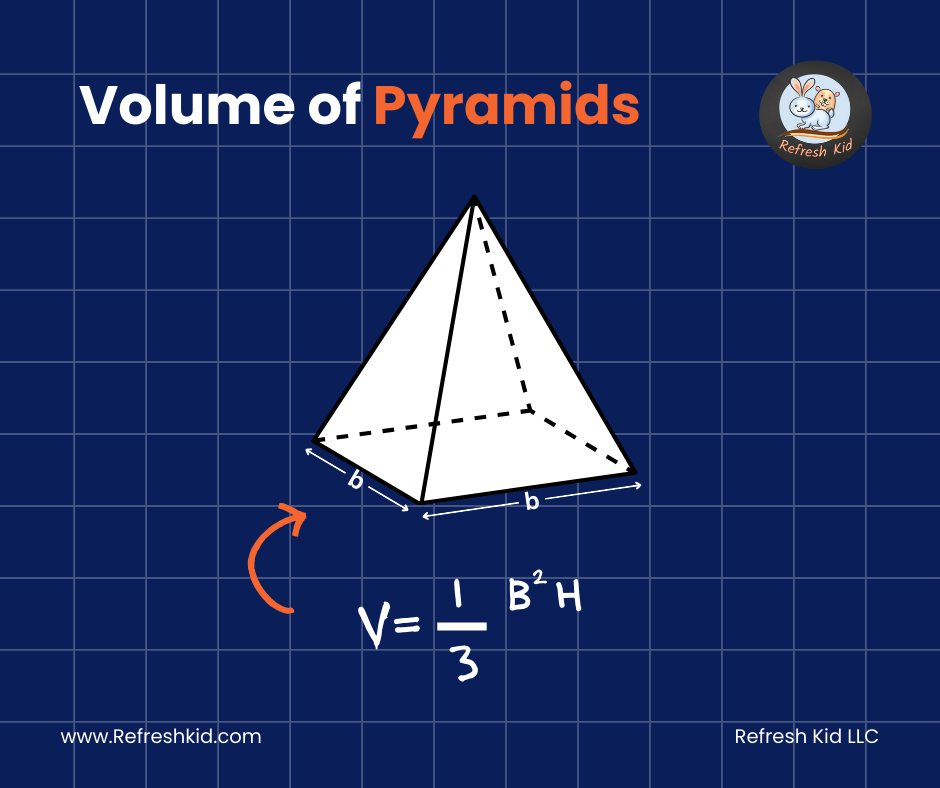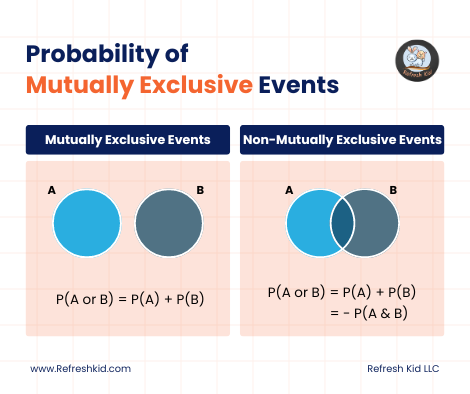Mastering the Volume of Pyramids: Practical Examples and Easy-to-Follow Formulas:
Understanding the volume of pyramids is a fundamental concept in geometry that is essential for students, architects, and anyone involved in three-dimensional shapes. In this blog, we will explore the formula to calculate the volume of a pyramid, followed by five numerical examples to make the concept clear and applicable in real-world situations.
What is a Pyramid?
A pyramid is a polyhedron formed by connecting a polygonal base and a point, called the apex, which is not in the same plane as the base. Pyramids are named according to the shape of their bases. For instance, a pyramid with a triangular base is called a triangular pyramid, while one with a rectangular base is known as a rectangular pyramid.

Formula for the Volume of a Pyramid:
The volume of a pyramid is calculated using the formula:
Where:
- Base Area is the area of the base of the pyramid.
- Height is the perpendicular distance from the base to the apex.
Numerical Examples:
Example 1: Triangular Pyramid
Suppose we have a triangular pyramid with a base area of 30 square centimeters and a height of 12 centimeters. Using the formula:
Therefore, the volume of the triangular pyramid is 120 cubic centimeters.
Example 2: Rectangular Pyramid
Consider a rectangular pyramid with a rectangular base measuring 8 cm by 5 cm, and a height of 10 cm. First, calculate the base area:
Now, apply the volume formula:
The volume of this rectangular pyramid is approximately 133.33 cubic centimeters.
Example 3: Square Pyramid
Imagine a square pyramid with a base side of 6 cm and a height of 15 cm. The area of the base is:
Plugging into the formula:
This square pyramid's volume is 180 cubic centimeters.
Example 4: Pentagonal Pyramid
For a pentagonal pyramid with a side length of 4 cm and an apothem of 2.5 cm, first find the base area using the formula for the area of a regular pentagon:
If the height of the pyramid is 9 cm:
The volume of the pentagonal pyramid is 75 cubic centimeters.
Example 5: Hexagonal Pyramid
Consider a hexagonal pyramid with a side length of 3 cm and an apothem of 2.6 cm, and a height of 8 cm. The area of the hexagonal base is:
Now calculate the volume:
This hexagonal pyramid's volume is 62.4 cubic centimeters.
Why Understanding Pyramid Volume is Important:
The calculation of the volume of pyramids has practical applications in various fields such as architecture, engineering, and mathematics education. Understanding how to calculate the volume helps in the planning and material estimation of structures and supports academic curriculum requirements.
Real-Life Applications of Pyramid Volume:
1. Architecture and Construction:
Architects and engineers use the volume of pyramids when designing and constructing structures such as roofs, monuments, and towers that mimic the pyramid shape. Understanding the volume helps in estimating materials needed for construction.
2. Environmental Science:
Researchers might calculate the volume of pyramid-shaped sand dunes or hills to assess changes in landscape due to erosion or deposition over time.
3. Packaging and Manufacturing:
In industries, the concept of pyramid volume is utilized in designing certain types of packaging materials, which might have a pyramid shape to accommodate specific items securely.
4. Arts and Design:
Artists and designers often use geometric shapes, including pyramids, in their work. Knowing the volume can be essential for creating large-scale sculptures or installations.
5. Educational Tools:
Teachers use pyramid volume calculations to help students understand and visualize mathematical concepts in a tangible way, enhancing spatial reasoning and geometry skills.
Conclusion:
Calculating the volume of pyramids can be straightforward if you remember the basic formula and follow the steps shown in our examples. Whether you're a student, teacher, or professional, mastering these calculations will enhance your understanding of geometry and its applications in real life.








